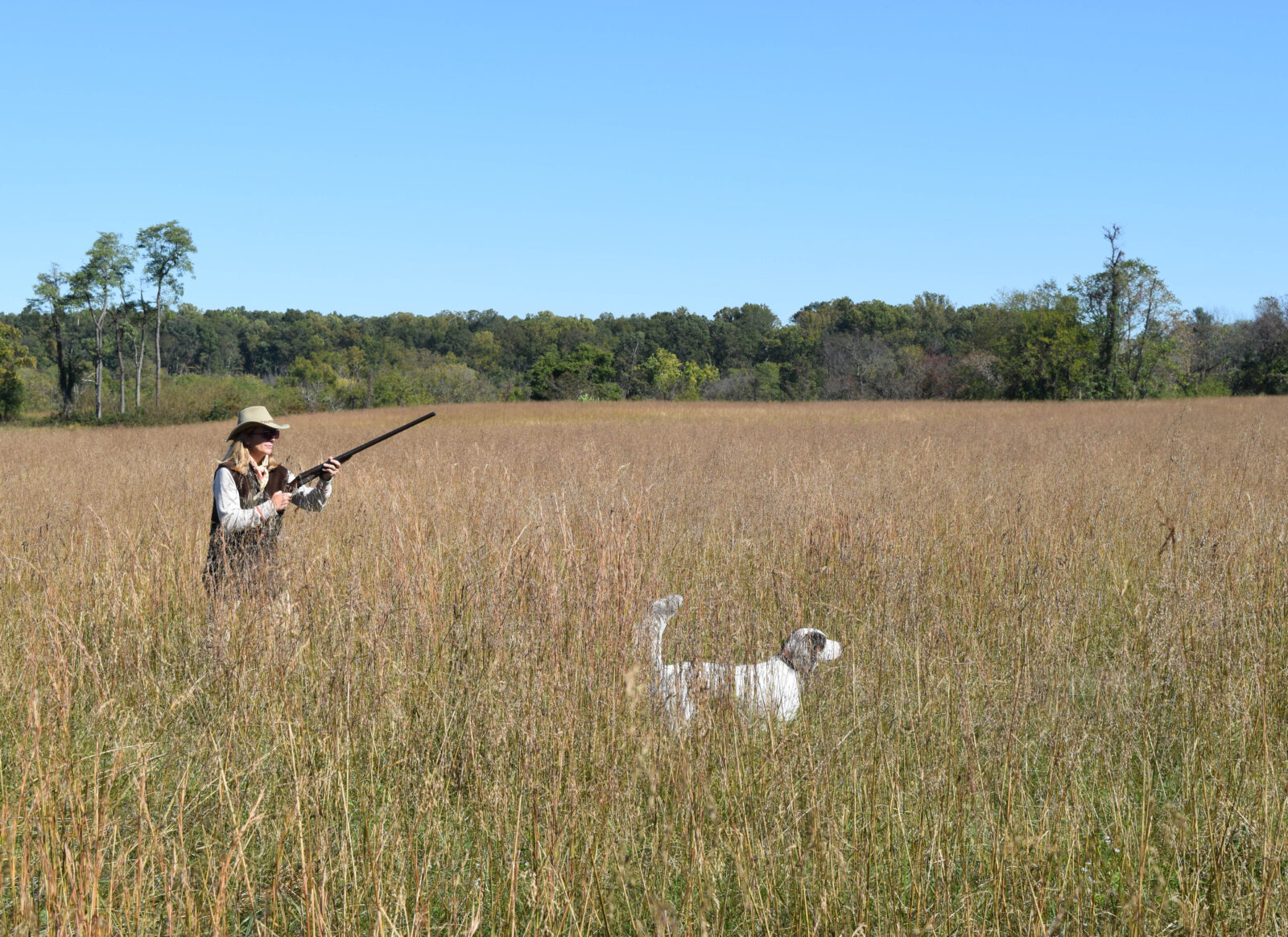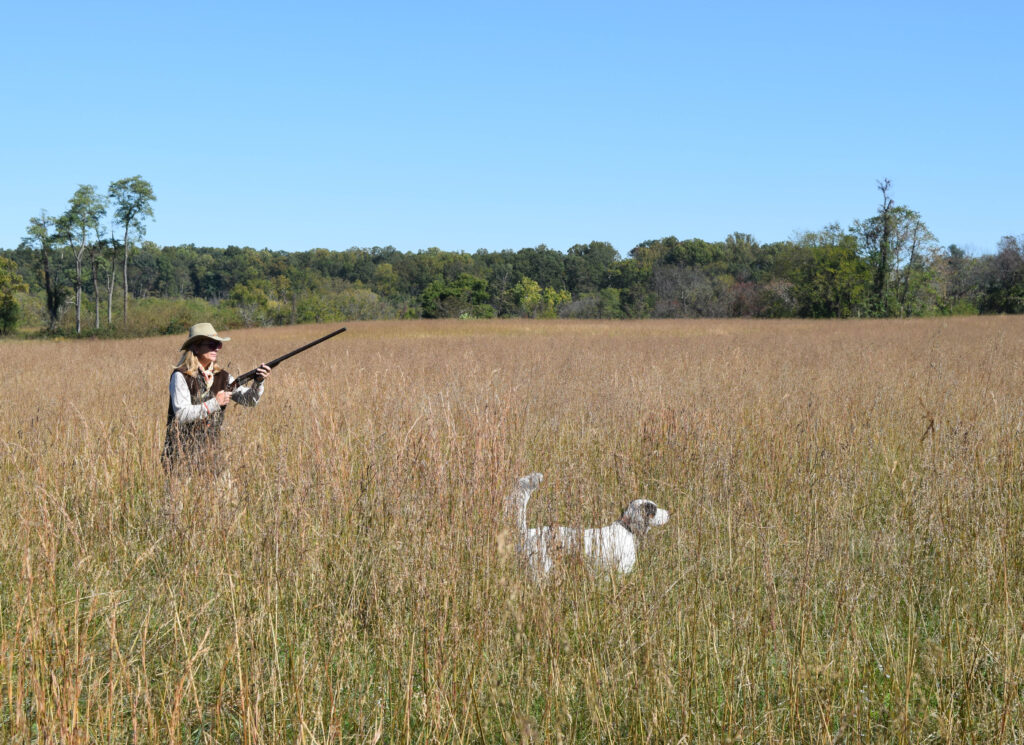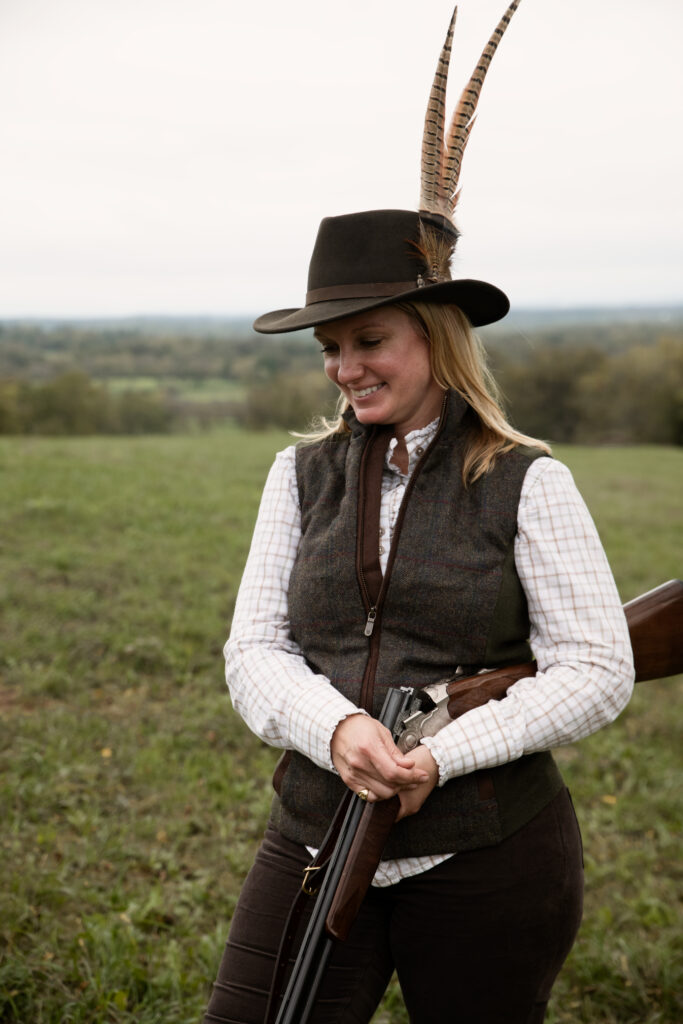Why They Hunt

WHY THEY HUNT
A look into the Virginia bird hunting scene
Written by Kaitlin Hill
The phrase “bird hunting” likely, and appropriately, summons mental images of orange vests, double-barrel shotguns, and Boykin Spaniels in pursuit of pheasants. What may seem counterintuitive is the symbiotic relationship between hunting and conservation. However, a conversation about Upland Hunting with Piedmont-based hunters Kathy Theis, Teresa Condon, and Annie Bishop reveals a profound respect for and desired perpetuation of the circle of life, a dedication to their dogs, a razor-sharp focus on safety, and an appreciation of nature’s beauty.
Distinct from the umbrella term of bird hunting, Upland Hunting focuses on a more narrow set of species. “Bird hunting is a broader term for any winged-bird,” Kathy Theis, a hunt guide at Rose Hill Game Preserve in Culpepper says. “You have duck, goose, grouse, or even woodcock hunting … Upland Hunting historically is just three specific species.”
“Upland hunting is pursuing pheasant, quail, partridge, and the like, while walking through the countryside with your pointing dog and your shotgun,” Teresa Condon, local hunting enthusiast, says. “And, the birds are hidden in the ground cover.”

The distinction in the types of birds and where they can be found is important, as it influences the breeds of dog appropriate to this style and the role they will play during the hunt. “The dogs hunt by scent,” Theis says. “They smell the bird and then, depending on the type of dog, they either point or they flush the bird.” Most of them aptly named, pointers can include English setters, German shorthaired pointers, German wirehaired pointers, English pointers, and Brittany spaniels. And flushers are often cocker spaniels, springer spaniels, and Boykin spaniels, according to Theis.
Regardless of the breed of dog, something true of all bird hunting is that powerful bond between person and pup. “Honestly, the main reason I hunt at all is for the dogs,” Annie Bishop, another local bird hunter, says. “For me, so much of it is watching the dogs work and seeing how their natural instincts and training have prepared them. And, when they are going through the brush or the marsh and bringing back a bird, they are about as happy as they’ve ever been.”
“We love our dogs,” Condon says. “They live in our homes, they come hunting with us, they are part of the family, and part of our hunting livelihood.”
“We respect our birds. Our hunting, our love for hunting has fed our family…”— Condon
That love of animals described by Condon extends, perhaps surprisingly, to the birds that are hunted. “We respect our birds,” she says. “Our hunting, our love for hunting has fed our family. We eat what we shoot, and my children have been raised on quail, pheasant, and dove. They have learned to appreciate that.” Among Condon’s favorite recipes are pheasant pie, bacon-wrapped dove, and duck breast prepared like jalapeño poppers with cream cheese and jalapeños stuffed inside.
Respect is a major factor in a bird hunter’s treatment of the environment too. All three women agree that conservation is a key aspect of the Upland, and more broadly, the bird hunting community’s goals. “Conservation is absolutely essential,” Theis says. “Without the environment, we would not have the game to hunt of course.”
While Condon notes, “We’re great proponents of conservation, to keep the land open for all wildlife … Conservation is everything for a hunter and that is why there are many organizations like Ducks Unlimited and Pheasants Unlimited that are constantly fighting off development to keep the land as an open space.”
“One of the main drivers for me is making sure that we preserve the land, so that the wildlife thrives,” Bishop says.
A large part of preservation is, unsurprisingly, preserves. Preserves like Rose Hill Game Preserve, Primland Resort, Sundance Kennel and Hunting Preserve and Sundance Preserve (all in the Piedmont region) maintain huge swaths of land that might otherwise be threatened with suburban sprawl.

Annie Bishop. Photo by Georgina Preston.
In addition, preserves offer beginners the opportunity to learn the ins and outs of upland hunting safely – a priority of all hunters. “Preserve hunting is definitely a good way to be introduced to the sport because it’s a little more controlled than wild bird hunting,” Theis says. “You know what you are getting into before you go out into the field.”
Bishop, Condon, and Theis agree that familiarizing oneself with the sport, specifically the sporting equipment, is a must. “Start with being around a shotgun first,” Bishop says. “So much of this is about safety, so make sure you are comfortable.”
“Safety is an absolute priority,” Condon says. She encourages anyone interested in bird hunting to “Go out and get some shooting lessons with clays, and then find a mentor to take you out bird hunting.”
Once a new shooter feels safe around a shotgun, what gauge they use is “all up to personal preference” Bishop says. For upland hunting, participants commonly shoot with a 12 or 20 gauge shotgun, according to Theis. “But, there are a few select people who hunt with a 16 gauge or 28 gauge,” Condon says. “You have to have the right gun for the right person. And again, this should all be done before you go out hunting. And, of course, one must have the correct ammunition for the type of hunt you’re going to do.”
With a season that runs from September to April, a bevy of local hunters, and preserves with guided instruction, now is the perfect time to try upland hunting. As Bishop says, “It’s about being outdoors…and understanding the beauty that surrounds us. It is a way to really enjoy where we live, because we are incredibly lucky to be where we are. We live in one of the most gorgeous places in the world.” ML
This article first appeared in the November 2021 Issue.








